763 Originele schilderijen te koop:
Wat is de oorsprong van de Aquarel techniek?
De aquarel maakt deel uit van de gouache van de familie die bekend staat als "verf op waterbasis": de pigmenten worden eerst gevonden in suspensie in water en worden vervolgens als sedimenten op het werk van de kunstenaar afgezet. . De pigmenten zijn transparant en laten daarom de drager verschijnen. Het wordt over het algemeen op blanco papier aangebracht als mogelijke aanvulling op eerder potloodwerk. Voltooide aquarel geeft vaak een indruk van eenvoud, maar vereist gedegen technische kennis om in al zijn subtiliteiten onder de knie te krijgen. In tegenstelling tot dekengouache wordt waterverf gebruikt vanwege zijn transparante eigenschappen. Kwetsbaarder en moeilijker te bewaren dan andere soorten verf, zoals acrylverf, moeten aquarelschilderijen in geschikte omstandigheden worden tentoongesteld om hun conservering te behouden. Merk op dat we zelden spreken van een schilderij voor een in aquarel geschilderd werk. Samuel Palmer, Richard Parkes Bonington en William Turner behoren tot de meest invloedrijke aquarellisten in de kunstgeschiedenis.
Hoe Naïeve Kunst stijl definiëren?
What is a Naive painting?
Naive painting is a style of art that was started by artists like Henri Rousseau who didn't know much about art. Most of the time, naive art is defined as visual art made by someone who hasn't had the training and education that a professional artist does. When a professional artist tries to copy this style, it is often called "primitivism."
What are the characteristics of Naive painting?
Naive art is usually defined as visual art made by someone who doesn't have the formal training and education that a professional artist does (in anatomy, art history, technique, perspective, ways of seeing). When a trained artist tries to copy this style, it is sometimes called primitivism, pseudo-naive art, or faux naive art.
Unlike folk art, naive art doesn't have to come from a specific popular cultural context or tradition. In fact, at least in advanced economies and since the Printing Revolution, it's impossible not to know about the local fine art tradition, which has spread through popular prints and other media. Naive artists know about "fine art" conventions like graphical perspective and compositional conventions, but they can't or don't use them to their full potential. Outsider art (also called "art brut"), on the other hand, refers to works that come from a similar background but have little to do with the mainstream art world.
Naive art is known for being simple and honest like a child, and this is why it is often copied. These kinds of paintings usually have a flat style of drawing and a simple way of showing depth. Henri Rousseau, a French Post-Impressionist who lived from 1844 to 1910 and was discovered by Pablo Picasso, was one of the most important painters of "naive art."
There has been some disagreement about what the term means and where it "ends" with other terms like folk art and outsider art. Naive art is usually used to describe works of fine art made by self-taught artists, like paintings and sculptures. Folk art, on the other hand, refers to things that can be used in everyday life. But this difference has been argued about. [6] "Provincial" is another word that can be used, especially for paintings and buildings. It is mostly used to describe work by artists who have had some traditional training but whose work falls short of metropolitan or court standards by accident.
By what do naive paintings stand out?
People often think of naive art as art made by someone who hasn't had any formal training or a degree, or hasn't had much. Before the 20th century, this was true, but now there are schools for naive art. Naive art is now a fully recognized type of art that can be seen in galleries all over the world.
The features of naive art don't fit well with the formal aspects of painting, especially when the three rules of perspective aren't followed (as described by the Progressive Painters of the Renaissance):
-Objects get smaller as you get farther away,
-Colors become less clear as you get farther away;
-Details become less clear as you get farther away.
Here are the results:
-Geometrically wrong effects of perspective (awkward parts of the works, like how children's drawings or paintings from the Middle Ages look, but that's where the comparison ends);
-Effects of perspective that aren't quite right. Strong use of pattern, unrefined color on all the plans of the composition, without enfeeblement in the background;
-Equal attention to details, including those in the background that should be shaded off.
People say that naive art is easy to spot because it is not complicated. It has become so popular and well-known, though, that many examples could be called "pseudo-naive." "Pseudo naive" or "faux naive" art is the work of an artist who is more imitative or self-conscious and whose work looks more copied than original. "Naive" art is the work of an artist who did not go to art school or academy, like Henri Rousseau or Alfred Wallis.
Since Autodidactism has become more popular as a way to learn in modern times, strict naiveté is not likely to be found in modern artists. Living artists don't always like naive categorizations, but this is likely to change as more dignifying signals become known. There are now museums for naive art in Kecskemét, Hungary; Kovaica, Serbia; Riga, Latvia; Jaen, Spain; Rio de Janeiro, Brazil; Vicq, France; and Paris. Gary Bunt, Lyle Carbajal, Gabe Langholtz, Gigi Mills, Barbara Olsen, Paine Proffitt, and Alain Thomas are all English-speaking living artists who admit to having a naive style.
"Primitive art" is another term that people who haven't studied art often use to describe it. Historically, though, it has been used more to describe art from cultures that Western academia has deemed "primitive" socially or technologically, like Native American, sub-Saharan African, and Pacific Island art (see Tribal art). This is different from the "primitive"-inspired, self-aware movement called "primitivism." Folk art is another term that is similar to naive art but not the same thing.
There are also the terms "navism" and "primitivism," which are usually used to describe professional painters who use naive art as their style (like Paul Gauguin, Mikhail Larionov, Paul Klee).
What is the history of the Naive movement?
No one knows exactly when the first naive artists started making art, but from the very beginning of art to the time of the "Modern Classic," naive artists have left behind clear signs of their creative work. At the very least, naive art has been "official" in the history of 20th-century art since 1912, when an almanac called Der Blaue Reiter was published. Wassily Kandinsky and Franz Marc, who made the almanac, showed six copies of Henri Rousseau's paintings and talked about how they were different from other pictures. Most experts agree, though, that naive art was "discovered" in 1885, when the painter Paul Signac learned about Henri Rousseau's skills and started putting on shows of his work in some of the best galleries in Paris.
The Sacred Heart painters
Wilhelm Uhde, a German art collector and critic, is known for being the main person in charge of the first Naive Art show, which took place in Paris in 1928. Henri Rousseau, André Bauchant, Camille Bombois, Séraphine Louis, and Louis Vivin all took part. Together, they are known as the Sacred Heart painters.
Earth Group
The Earth Group (Grupa Zemlja) was a group of artists, architects, and thinkers from Croatia who lived and worked in Zagreb from 1929 to 1935. The group was Marxist and was partly based on "Neue Sachlichkeit,"[19] which led to more stylized forms and the start of Naive painting. In the group were painters Krsto Hegedui, Edo Kovaevi, Omer Mujadi, Kamilo Ruika, Ivan Tabakovi, and Oton Postrunik, sculptors Antun Augustini and Frano Krini, and the architect Drago Ibler. The Earth group tried to figure out how to solve social problems. Their program stressed the importance of creative freedom and was against blindly copying styles from other countries. They didn't want to make art just for the sake of art. Instead, they thought it should reflect the real world and the needs of the modern community. The government of the time was getting more and more upset by what was going on at the group's exhibitions, so in 1935, the group was banned.
Hlebine School
From about 1930 on, this term was used to describe naive Croatian painters who worked in or around the village of Hlebine, which is near the border with Hungary. At this time, the village was just "a few muddy, winding streets and one-story houses," according to the World Encyclopedia of Naive Art (1984). However, it produced such a great crop of artists that it became almost synonymous with Yugoslav naive painting.
Hlebine is a small, beautiful town in the north of Croatia. In the 1920s, a group of self-taught peasants started to paint in a way that was different and even a little bit revolutionary. Leading intellectuals of the time, like the poet Antun Gustav Mato and Miroslav Krlea, the most famous name in Croatian literature, pushed for this. They wanted a unique national style of art that was not influenced by the West. Krsto Hegedui, a well-known artist from Hlebine, took these ideas and used them to start the Hlebine School of Art in 1930. He did this to find "rural artistic expression" on a national level.
Ivan Generali was the first master of the Hlebine School. He was also the first artist to create a unique style and reach a high level of art. After the Second World War, the next generation of Hlebine painters focused more on stylized, made-up pictures of life in the country. Generali stayed the most important person and helped other artists, including his son Josip Generali, get started. With the 1952 Venice Biennale and shows in Brazil and Belgium, the Hlebine school became known all over the world.
Some of the best known naive artists are Dragan Gaži, Ivan Generalić, Josip Generalić, Krsto Hegedušić, Mijo Kovačić, Ivan Lacković-Croata, Franjo Mraz, Ivan Večenaj and Mirko Virius.
What are some famous Naive paintings?
Naive art is made up of simple, childlike techniques and ideas. Because of this, modernists who don't like what they see as the fake sophistication of work made in the traditional system have praised it. Henri Rousseau is the best-known naive artist working today, so we'll start with one of his works.
The Dream (1910) by Henri Rousseau
The young girl has been taken to a jungle, where a local musician plays a brass instrument and sings to her. Yadwigha, who is half hidden by the jungle's shadows, reaches out to the musician while looking out over a beautiful view of jungle greenery with lotus petals, parrots, monkeys, an elephant, two lions, and a snake. The snake coming toward the scene in the lower right corner of the picture makes me think of the Garden of Eden. A pink snake moves through the bushes. Its shape, which is like a snake, looks like a woman's legs and hips.
In this piece of art, a naked model is sitting on a sofa, which brings together the familiar and the strange. The painting "The Dream" shows why the Surrealists liked Rousseau's work. It has amazing attention to detail, bright colors, and a strange mix of images.
At least 22 different shades of green were used to paint the jungle plants. Poet and art critic Guillaume Apollinaire was blown away by the work. "The painting is absolutely gorgeous!" he exclaimed. I don't think anyone will laugh this year."
This picture looks like a dream because the only thing in it is a naked woman lying on a sofa in the tropics. But it's not clear if the art shows Yadwigha's dream or Rousseau's. But one of the best things about the picture is how open it is to different interpretations. Rousseau's trips to the natural history museum and the Jardin des Plantes in Paris gave him ideas for this piece, which has a lush jungle, wild animals, and a mysterious horn player. "When I'm in these hothouses and see strange plants from other places, it feels like I'm entering a dream," the artist said of his visits.
Death ship (1942) by Alfred Wallis
The main idea behind Alfred Wallis's Death Ship is a huge black ship with dark gray steam billowing from it. Five sailors in black suits and caps can be seen as the ship moves over icy white water. This picture, which has a good name, is a great example of the kind of work Wallis did in his later years. They show how sad the artist was feeling at the time.
Wallis made these paintings while he was alone and his eyesight was getting worse and his mind was getting worse. No one knows for sure when Wallis finished making these last changes. They were made either while Wallis was living in the Madron poorhouse or just before he was sent there, which was something he had been afraid of for a long time. Death Ship disproves the idea that Wallis couldn't use deep and complicated symbolism in his work because he was a "naive" artist. The ship is a sign of death and destruction, which is more of a metaphor than a literal representation of the things Wallis paints. It is a mix of the feelings Wallis had when he was at sea and when he was near the coast of St. Ives.
The Broken Column (1944) by Frida Kahlo
After she was badly hurt in a car accident when she was 18, most of Frida Kahlo's self-portraits are about her physical and mental pain. As her health got worse, this theme came back and got much stronger as her life came to an end. Her graphic pictures of herself in pain show how hard it was for her to deal with physical problems and pain. "The Broken Column," a painting by Kahlo, was made soon after she had surgery on her back.
This was just one of many times she had to go to the doctor to fix problems caused by an injury she had in the past. Kahlo had to wear a steel corset while painting, which was different from the plaster casts she had worn before. In the picture, Kahlo is standing in a broken, empty place that looks like it has been through as much trouble and tragedy as she has. Due to a deep, jagged crack that runs the length of her almost-naked body, her spine looks like a broken Ionic stone column. Her spinal column looks like it's about to break, especially at the bottom. Nails of different sizes go through her whole body and face, making her pain even worse. She has a lot of tears running down her cheeks.
Kahlo painted herself naked at first, except for the medical support girdle she wears. Then she added a white covering that looks like it came from a hospital to cover her bottom half. Her breasts are showing, and even though her body has been cut up, her sensuality shines through. The way nails and sheets are shown also has strong echoes of the Christian symbol of martyrdom. Even though she is in pain, Kahlo's face shows that she is strong and will not give up. Even though her body has been hurt and tortured, it is clear that her spirit has not been hurt.
This is the end of our look at Naive art, a style that looks simple and childlike. This word is used to describe paintings made in cultures that are more or less advanced but don't have the traditional skills to draw things. The colors are bright and not natural, the view isn't scientific, and the meaning is literal or childish.
Bent u op zoek naar Originele schilderijen te koop ?
Ontdek alle stijlen en alle schildertechnieken: hedendaagse schilderijen, straatkunst, abstracte kunst, figuratieve kunst, landschappen, portretten, stillevens, naakten, aquarel, olieverf, acrylverf... ArtMajeur is voor iedereen met artistieke gevoeligheden en viert schoonheid aan uw zijde voor 20 jaar met meer dan 3.6 miljoen hedendaagse kunstwerken om te ontdekken ... of te verwerven! De wereldstandaard voor hedendaagse schilderijen. Ontdek werken van hedendaagse kunstenaars van over de hele wereld om je interieur met klasse te decoreren! Eenvoudige kunstliefhebber of overtuigd verzamelaar? Vind het favoriete canvas of schilderij dat uw decoratie echt zal verbeteren. ArtMajeur biedt u originele werken, limited editions en art prints van de beste hedendaagse kunstenaars ter wereld. Op ArtMajeur worden de schilderijen geselecteerd door liefhebbers en experts op de kunstmarkt. We selecteren voor u de originele werken van trendy, bekroonde en erkende schilders, evenals nieuwe opkomende waarden op het gebied van hedendaagse kunst om u te begeleiden en te helpen bij uw proces van online schilderijen kopen.
Hoe koop je online een aquarel schilderij?
Online een aquarel kopen is nog nooit zo eenvoudig geweest. Tegenwoordig nemen meer mensen de kunstvorm over en gebruiken ze verschillende media om prachtige kunstwerken te maken. Van potloden en pastels tot verven en aquarellen, mensen hebben allerlei kunstmedia geprobeerd, voornamelijk canvas en vel papier. Met aquarel schilderen zijn de mogelijkheden echter eindeloos. Kunstenaars kunnen acrylverf gebruiken om een mooie, ingewikkelde schets te maken, of ze kunnen waterverf gebruiken om een scène in hun huis te schilderen. Wat ze ook met aquarel willen doen, het kan.
Er zijn zoveel voordelen aan het online kopen van een aquarel. Het eerste voordeel is dat iedereen van elke leeftijd op internet kan surfen om de beste aquarel te vinden. Deze schilderijen kunnen gebruikt worden voor decoratieve doeleinden en ook om cadeau te doen. Het is natuurlijk altijd het beste om een aquarel online te kopen van een gevestigde en bekende website. Op deze manier krijgt u een kunstwerk van hoge kwaliteit voor thuis of op kantoor. Het tweede grote voordeel van het online kopen van een waterverfschilderij is dat u door een grote verscheidenheid aan kunstwerken kunt bladeren die zijn gemaakt door bekende en getalenteerde kunstenaars.
Met veel websites die een brede selectie aan kunstwerken aanbieden, is het helemaal niet moeilijk om een stuk te vinden dat je wilt. Zodra u een waterverfschilderij online koopt, kunt u rustig de tijd nemen en alle verschillende soorten waterverfschilderijen bekijken die op internet beschikbaar zijn. Op sommige sites kunt u zelfs een voorbeeld downloaden van verschillende soorten kunstwerken waaruit u kunt kiezen. Dus als je ooit een unieke en opwindende manier nodig hebt om je huis of kantoor te decoreren, dan moet je zeker overwegen om online een waterverfschilderij te kopen .
Schilderijen in aquarel zijn een geweldige manier om kleur in je huis te brengen. Als je problemen hebt om uit te zoeken wat het beste aan de muur zou staan, winkel dan online en koop iets dat je opvalt - het is misschien perfect om in te lijsten zodra het binnen is!
Schilderijen in aquarel zijn er al vóór olie- of acrylschilderijen, wat betekent dat ze eeuwen meegaan als ze goed worden verzorgd. Ze hebben ook een ongewone diepte van kleuren omdat verschillende pigmenten met elkaar vermengen in plaats van gescheiden te blijven zoals olieverf, dus er zijn altijd veel meer experimenteermogelijkheden dan gewone schilderijen bieden. Je kunt een stadsgezicht, landschap of portret kopen dat is geschilderd met aquarellen van een professionele kunstenaar of een opkomende kunstenaar.
Je hebt misschien gehoord van de nieuwe trend dat mensen hun favoriete schilderijen online kopen. Het voordeel ten opzichte van het bezoeken van een galerie is dat je tegenwoordig een grote keuze aan kunstwerken op internet te zien krijgt. Dus voordat u daadwerkelijk een kunstwerk koopt, is het raadzaam om de tijd te nemen en de markt grondig te onderzoeken. Hier zijn een paar punten waarmee u rekening moet houden bij het online zoeken naar illustraties.
- Identificeer de juiste plaats. Een goed startpunt is om online forums te bezoeken die discussiëren over kunstgalerijen en schilderijen. Zoek naar informatie over de bekende online verkopers. Er zijn veel gerenommeerde sites die een goede prijs-kwaliteitverhouding bieden. Ook kun je gebruik maken van feedback en reviews die op websites te vinden zijn.
- Bekijk de staat van het schilderij. Zorg ervoor dat het canvas in goede staat is en niet beschadigd is. U kunt op elke site een waterverfschilderij kopen, maar het is beter om de staat van het werk zorgvuldig te controleren voordat u een bestelling plaatst. U kunt de verkoper/website zelfs een bericht sturen om te zien of het werk is zoals beschreven of niet. Als de kunst op enigerlei wijze is beschadigd, stuur het stuk dan onmiddellijk terug.
- Het wordt aangeraden om bij gerenommeerde en professionele verkopers te kopen. Kunstgalerijen hebben hun eigen beleid met betrekking tot transacties en transacties. Lees hun algemene voorwaarden voordat u een deal aangaat. Een professionele kunstexpert kan u over elke kwestie adviseren.
- Zorg ervoor dat de online galerij al een lange tijd actief is. Gerenommeerde online kunstgalerijen zullen een goede reputatie hebben en veel vaste klanten hebben. Bekijk het portfolio van de verkoper en zorg ervoor dat de getoonde werken in de online galerij originele schilderijen zijn.
Bij het kopen van een aquarel moet de koper een paar tips in gedachten houden die hem kunnen helpen zijn taak gemakkelijker te maken. Door schilderijen van een online platform te kopen, kunt u uitgebreid onderzoek doen naar het onderwerp. Je maakt kennis met verschillende soorten kunstenaars, verschillende technieken en de achtergrond en traditie van de techniek die in een schilderij wordt gebruikt. U kunt ook waardevolle tips en advies krijgen over het kopen van een aquarel. Het wordt aanbevolen dat kopers kopen bij gerenommeerde dealers en galerieën.
- Voordat u de betaling uitvoert, moet u alle online verkopers en galerijen zorgvuldig bekijken en er een kiezen die bij uw doel past. Sommige verkopers zullen hun schilderijen tegen een goedkope prijs of tegen een dure prijs verkopen. Het wordt aanbevolen dat u rondkijkt en prijzen vergelijkt voordat u de beslissing neemt om een bepaald stuk te kopen.
- Voordat u een aquarel schilderij koopt, is het belangrijk dat u de geschiedenis van het schilderij te weten komt. Je moet meer te weten komen over de kunstenaar en om wat voor soort schilderijen hij bekend staat. In het geval van impopulaire kunstenaars, als u tevreden bent met het schilderij, volg dan uw instinct, dan kunt u de betaling uitvoeren en uw aankoop ontvangen.
Over het algemeen kan worden gezegd dat het online kopen van een waterverfschilderij vrij eenvoudig is. Je moet altijd goed naar alle verkopers kijken en dan beslissen of je koopt of niet. Wees niet gehaast bij het kopen van een schilderij en neem de tijd om alle beschikbare opties te analyseren voordat u de definitieve beslissing neemt.
Bij ArtMajeur kunt u door duizenden aquarellen bladeren en contact opnemen met onze klantenservice om u te helpen de beste keuze te vinden!
Discover contemporary artworks on ArtMajeur
Contemporary art is a vibrant constellation of artistic expressions. This creative universe encompasses a wide array of mediums, from paintings, sculpture, and photography to drawing, printmaking, textile art, and digital art, each medium a star shining with its own distinct radiance. Artists use diverse supports and materials to bring their visions to life, such as canvas, wood, metal, and even innovative digital canvases for the creation of virtual masterpieces.
A contemporary painting, for instance, may weave its story through the masterful strokes of acrylic or oil, while a contemporary sculpture might sing its song in the language of stone, bronze, or found objects. The photographic arts capture and manipulate light to produce striking images, while printmaking employs techniques like lithography and screen-printing to produce multiples of a single, impactful image. Textile art plays with fabrics and fibers, whereas digital art pushes the boundaries of creation with innovative technology.
The allure of contemporary art lies in its boundary-pushing nature, its relentless quest for experimentation and its constant reflection of the evolving human experience. This boundless creativity, coupled with its strong social and personal commentary, makes every piece of contemporary art a unique emblem of its time, a mirror held up to the realities and dreams of our complex world. It whispers to us, moves us, provokes thought, and kindles a deep emotional response, stirring the soul of anyone willing to listen. It is, indeed, the language of emotions and ideas, spoken in the dialect of our era.

©2020 Oxana Zaika
Origins and history of contemporary art
The story of contemporary art unfolds in the mid-20th century, marked by seismic shifts in artistic expression. Post-World War II, around the 1950s and 1960s, artists began experimenting beyond traditional confines, challenging the norms of what art could be. This revolutionary epoch birthed myriad new movements and artistic forms such as abstract expressionism, pop art, and minimalism. Paintings, once confined by realism, embraced abstraction, as artists used color and form to express emotions and ideas. Notable periods like the advent of pop art in the late 1950s and early 1960s saw artworks mimicking popular culture and mass media, reflecting society’s shifting focus.
The sculptural arts, too, witnessed a metamorphosis. Sculptors started to experiment with new materials and forms, often creating artworks that interacted with the viewer and the surrounding space, fostering a sense of engagement. Drawing, a timeless practice, also evolved, with artists incorporating innovative techniques and concepts to redefine its role in contemporary art.
Photography, a relatively new medium, emerged as a powerful tool in the contemporary art landscape. Born in the 19th century, it truly came into its own in the latter half of the 20th century, blurring the lines between fine art and documentation. Printmaking, a practice dating back to ancient times, saw renewed interest and experimentation with techniques like lithography, etching, and screen printing gaining prominence.
The realm of textile art expanded dramatically, as artists began to appreciate the versatility and tactile quality of fabric and fibers. Artists began using textiles to challenge the boundaries between fine art, craft, and design.
The dawn of digital technology in the late 20th century heralded a new age for contemporary art. Digital art emerged as artists started leveraging new technologies to create immersive, interactive experiences, often blurring the line between the virtual and the physical world.
Through these transformative periods, the essence of contemporary art has remained the same: a dynamic, evolving reflection of the times we live in, continually pushing boundaries and embracing the new, always questioning, always exploring.
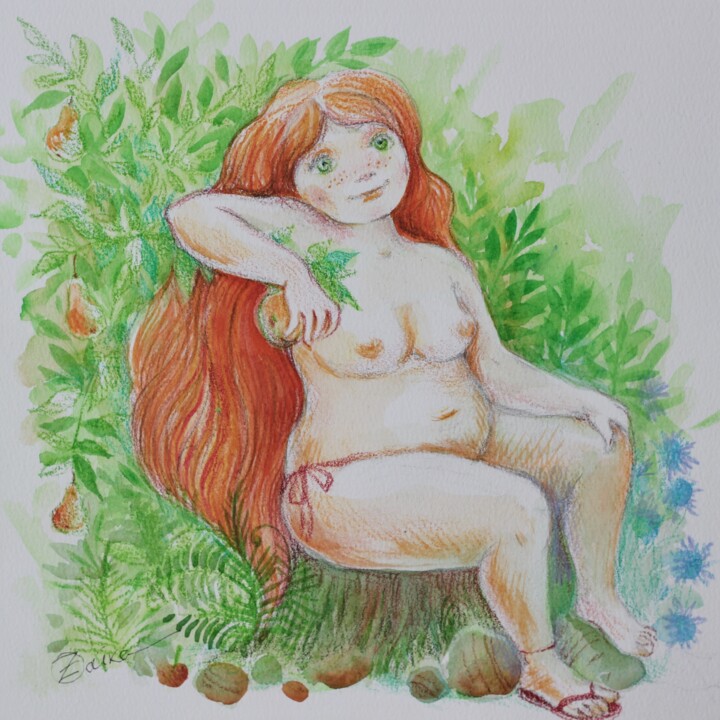
©2025 Oxana Zaika
Evolutions of theses contemporary works in the art market
As we navigate through the 21st century, the dynamic landscape of contemporary art continues to evolve and expand, reflecting our ever-changing world. Contemporary paintings, once primarily confined to two-dimensional canvases, now embrace a multitude of forms and techniques, ranging from mixed media installations to digital creations, each piece a rich a weaving of thoughts, emotions, and narratives. Sculpture, too, has ventured far beyond traditional stone and bronze, with artists incorporating light, sound, and even motion, embodying the ephemerality and flux of the modern world.
Photography, in the hands of contemporary artists, has expanded its horizons, seamlessly blending with digital technology to create breathtaking imagery that challenges our perception of reality. Drawing, as well, has transcended the borders of paper, incorporating multimedia elements and exploratory techniques to redefine its role in the artistic discourse. Printmaking continues to flourish, with contemporary artists using traditional methods in innovative ways to deliver potent social and personal commentaries.
Textile art, once considered a craft, now holds a prominent place in the contemporary art world, with artists using it to explore issues of identity, tradition, and cultural heritage. Meanwhile, digital art, the newest member of the contemporary art family, has revolutionized the way we create and interact with art, presenting immersive experiences that blur the boundary between the virtual and the physical.
These diverse forms of contemporary art hold significant value in the current art market, not only due to their aesthetic appeal but also their ability to encapsulate and communicate complex ideas and emotions. Collectors, curators, and art lovers worldwide seek these works, drawn to their inherent dynamism, their innovative use of materials, and their eloquent expressions of our shared human experience. As a testimonial to our times, these contemporary artworks encapsulate the pulse of our society and the resonance of individual voices, forever etching our collective narrative into the annals of art history.
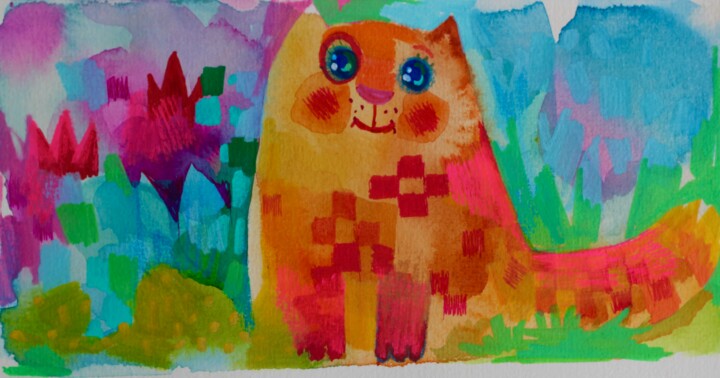
©2025 Oxana Zaika
Famous Contemporary Artists
As we delve into the vibrant realm of contemporary art, we encounter an array of artists who shape this dynamic field. Each a master in their medium - painting, sculpture, photography, drawing, printmaking, textile, or digital art - they push artistic boundaries, reflecting our era and challenging perceptions. Let’s explore these remarkable contributors and their groundbreaking works.
1. Gerhard Richter - Known for his multi-faceted approach to painting, Richter challenges the boundaries of the medium, masterfully oscillating between abstract and photorealistic styles. His works, whether featuring squeegee-pulled pigments or blurred photographic images, engage in a fascinating dialogue with perception.
2. Jeff Koons - A significant figure in contemporary sculpture, Koons crafts monumental pieces that explore themes of consumerism, taste, and popular culture. His iconic balloon animals, constructed in mirror-polished stainless steel, captivate with their playful yet profound commentary.
3. Cindy Sherman - An acclaimed photographer, Sherman uses her lens to explore identity and societal roles, particularly of women. Renowned for her conceptual self-portraits, she assumes myriad characters, pushing the boundaries of photography as a medium of artistic expression.
4. David Hockney - Hockney, with his prolific output spanning six decades, is a pivotal figure in contemporary drawing. His bold use of color and playful exploration of perspective convey an intoxicating sense of joy and an unabashed celebration of life.
5. Kiki Smith - An innovative printmaker, Smith’s work explores the human condition, particularly the female body and its social and cultural connotations. Her etchings and lithographs speak to universal experiences of life, death, and transformation.
6. El Anatsui - A master of textile art, Anatsui creates stunning tapestry-like installations from discarded bottle caps and aluminum scraps. These shimmering, flexible sculptures blend traditional African aesthetic with contemporary art sensibilities, speaking to themes of consumption, waste, and the interconnectedness of our world.
7. Rafael Lozano-Hemmer - A leading figure in digital art, Lozano-Hemmer utilizes technology to create interactive installations that blend architecture and performance art. His work, often participatory in nature, explores themes of surveillance, privacy, and the relationship between people and their environments.
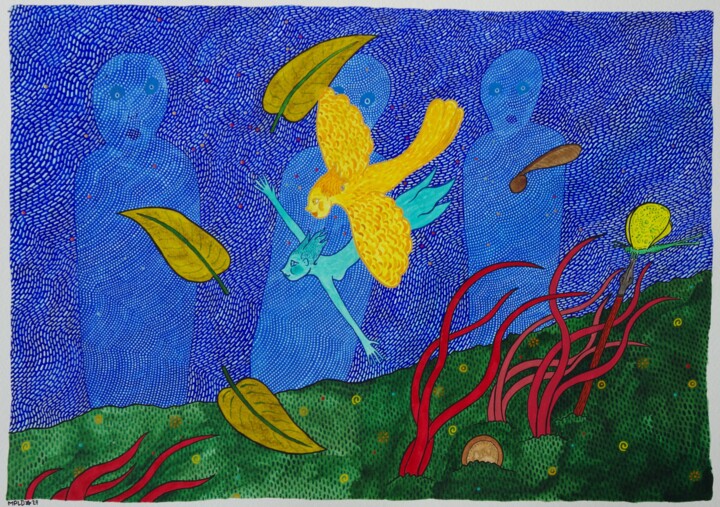
©2024 Laurent Mangepapier
Notable contemporary artworks
The contemporary art landscape is a dynamic patchwork of diverse expressions and groundbreaking ideas, each artwork a unique dialog with its audience. Here are a selection of some renowned contemporary artworks, spanning various media such as painting, sculpture, photography, drawing, printmaking, textile art, and digital art, that have profoundly influenced this vibrant movement.
"Cloud Gate" by Anish Kapoor, 2006 - This monumental stainless steel sculpture, also known as "The Bean," mirrors and distorts the Chicago skyline and onlookers in its seamless, liquid-like surface, creating an interactive experience that blurs the line between the artwork and the viewer.
"Marilyn Diptych" by Andy Warhol, 1962 - An iconic piece of pop art, this silkscreen painting features fifty images of Marilyn Monroe. Half brightly colored, half in black and white, it reflects the dichotomy of celebrity life and its influence on popular culture.
"Rhein II" by Andreas Gursky, 1999 - This photographic artwork, a digitally-altered image of the Rhine River, is celebrated for its minimalist aesthetic. It strips the landscape to its bare essentials, invoking a sense of tranquility and vastness.
"Black Square" by Kazimir Malevich, 1915 - A revolutionary painting in the realm of abstract art, this piece, featuring nothing more than a black square on a white field, challenges traditional notions of representation, symbolizing a new era in artistic expression.
"Puppy" by Jeff Koons, 1992 - This giant sculpture, a West Highland Terrier blanketed in flowering plants, explores themes of innocence, consumer culture, and the interplay between high art and kitsch. It’s a delightful blend of traditional sculpture and garden craft.
"Re-projection: Hoerengracht" by Ed and Nancy Kienholz, 1983-1988 - A room-sized tableau representing Amsterdam’s red-light district, this work combines elements of sculpture, painting, lighting, and found objects. It engages viewers in a stark commentary on commodification and objectification.
"Untitled" (Your body is a battleground) by Barbara Kruger, 1989 - This photomontage, combining black-and-white photography with impactful text, explores issues of feminism, identity, and power. Its potent, confrontational message is a prime example of the power of text in contemporary visual art.
"For the Love of God" by Damien Hirst, 2007 - This sculpture, a platinum cast of a human skull encrusted with 8,601 diamonds, probes themes of mortality, value, and the human fascination with luxury and decadence. It’s a compelling blend of macabre and magnificence.
"Physical impossibility of Death in the Mind of Someone Living" by Damien Hirst, 1991 - This artwork, featuring a tiger shark preserved in formaldehyde, blurs the line between traditional sculpture and biological specimen. It prompts viewers to contemplate mortality and nature’s ferocity.
"One and Three Chairs" by Joseph Kosuth, 1965 - A piece of conceptual art, it presents a physical chair, a photograph of a chair, and a dictionary definition of a chair, thus exploring the relationship between language, picture, and referent in art.
These pieces, in their diversity, exemplify the rich tapestry of contemporary art, each piece a unique commentary on our world and a testament to the limitless potential of creative expression.

Laurent Mangepapier
Aquarel op Papier | 11,7x16,5 in
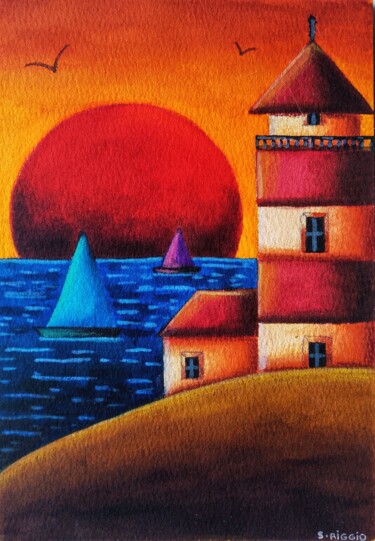
Sabrina Riggio
Aquarel op Papier | 7,1x5 in

Ksenia Lutsenko
Aquarel op Papier | 22,1x13,8 in
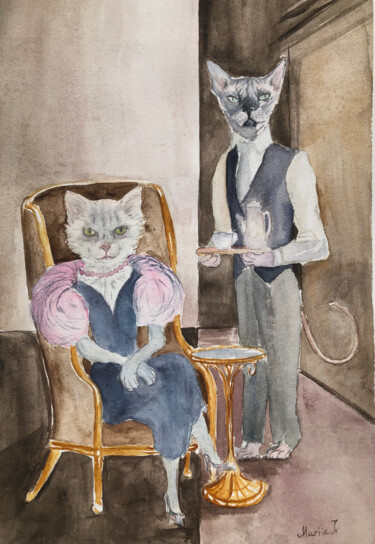
Mariia Ivanova
Aquarel op Papier | 15,8x11,8 in

Inna Viriot
Aquarel op Papier | 5,4x7,5 in
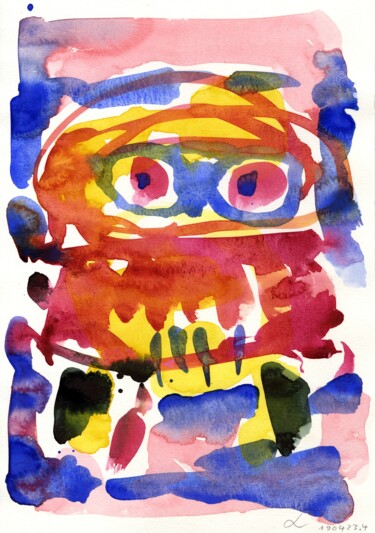
Detlef Lemme (Farbenkugel)
Aquarel op Papier | 13,4x9,5 in

Laurent Mangepapier
Aquarel op Papier | 9,8x9,8 in
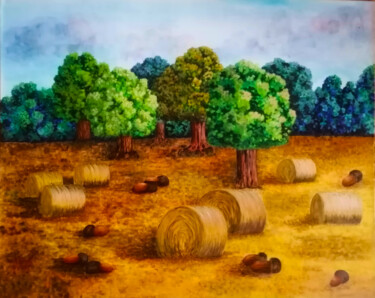
Olga Dokuchaeva
Aquarel op Canvas | 15,8x19,7 in

Laurent Mangepapier
Aquarel op Papier | 19,7x25,4 in

Laurent Mangepapier
Aquarel op Papier | 8,3x11,7 in

Ludmila Kolbenova
Aquarel op Papier | 18,1x13,4 in
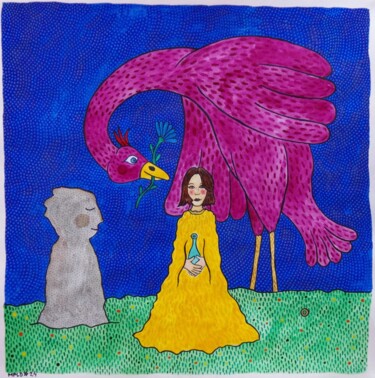
Laurent Mangepapier
Aquarel op Papier | 9,8x9,8 in
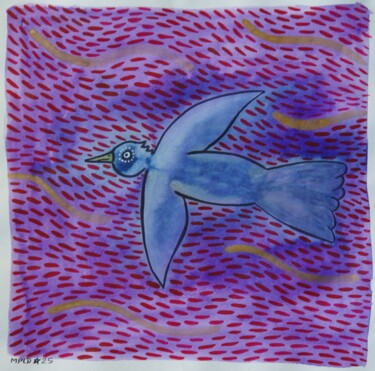
Laurent Mangepapier
Aquarel op Papier | 9,8x9,8 in
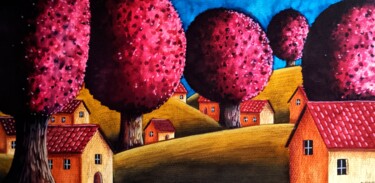
Sabrina Riggio
Aquarel op Papier | 7,9x15,8 in
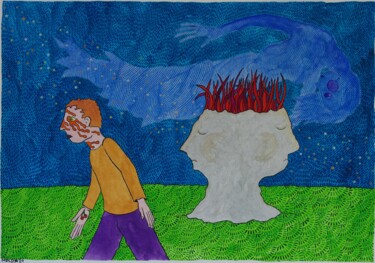
Laurent Mangepapier
Aquarel op Papier | 11,7x16,5 in
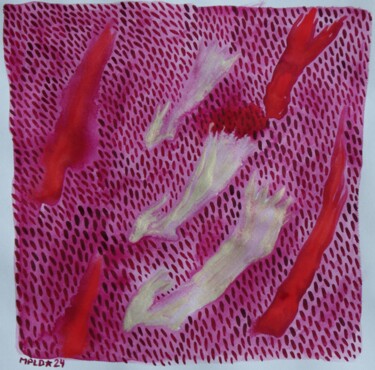
Laurent Mangepapier
Aquarel op Papier | 9,8x9,8 in

Yulia Belasla
Aquarel op Papier | 5,5x3,5 in
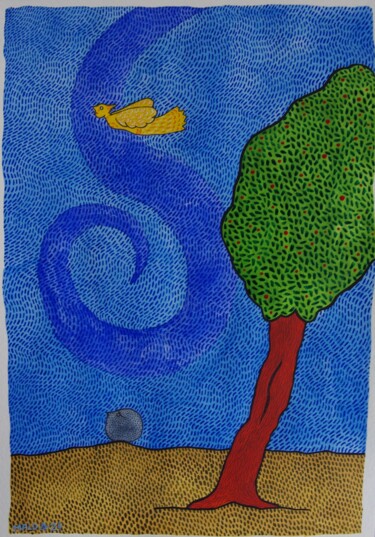
Laurent Mangepapier
Aquarel op Papier | 9,8x6,9 in


















